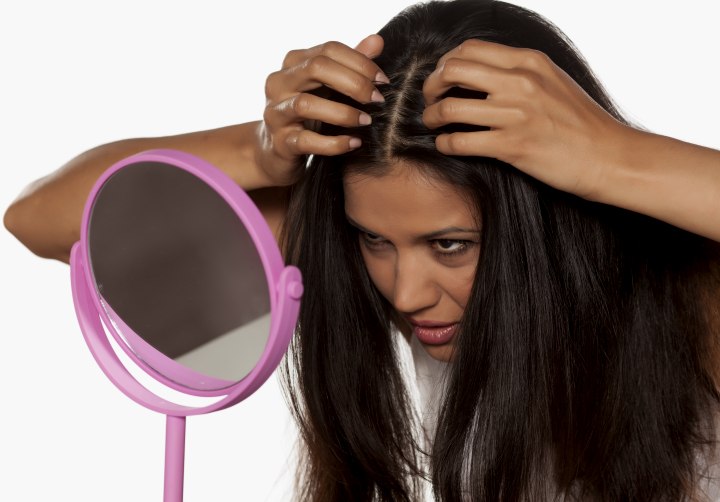Correct Hair Color

A: Rule number 1: Color does not lift color. Ever. Really, this is the most common mistake that people make.
You have a few options, but first decide between these two: Will you be trying to correct this on your own or will you opt to go to the salon?
The process to correct the color of your hair is fairly easy in itself. Bleach has to be applied to the ends to the point where the previous artificial color stops. Then the hair will be wrapped in a plastic cap or plastic strips, and you’ll need to apply some heat to the hair to heat up the bleach, which helps to break up the artificial color faster and more effectively. After the desired level is reached, the bleach will be rinsed, your hair will be dried, and then the actual color can be applied to the pre-lightened hair.
Doing this yourself will be fine if you have some experience with bleaching hair. After you have bleached the ends, you can apply the “bronze” color from about 2 inches from your roots. I would assume that this bronze color will probably be a medium golden brown with a golden undertone; this is the description that you’ll find on the box. You can then apply a dark or very dark brown to your roots.
On the picture it looks like your hair has a fine to medium structure, so I would recommend that you choose the dark brown for the roots, as the very dark brown could look black on your hair. Fine hair always processes a shade darker than thick-structured hair does.
The danger around this is that you can potentially over-process your hair with the bleach, causing extensive irreparable chemical breakage to the hair shaft if you leave the bleach on too long, or if you apply a too high volume peroxide to fine, thin or previously over-processed hair. You also need to know what type of color, level and tone color you’ll be able to apply to the bleached hair for the best effect.
If you’ve done this before, then go ahead and correct the process yourself. But if you haven’t experience with this kind of coloring and bleaching, I would suggest that you go to the salon to have it done. The stylist will know exactly what strength bleach to use without damaging your hair. She/he will also be able to give you professional advice on which color, tone and level will best suit your complexion and undertone.
©Hairfinder.com
See also:
How to color hair
How bleaching hair works